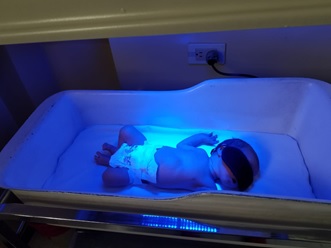Light-emitting diode (LED) versus fluorescent lamp phototherapy A quasi-randomized clinical study.
Main Article Content
Abstract
Introduction: It has been established that phototherapy with LED technology is more effective than conventional phototherapy to treat neonatal hyperbilirubinemia by reducing the number of hours of treatment required in term and preterm newborns. The objective of this study was to carry out a randomized clinical study with three types of lamps, including a prototype.
Methods: This was a clinical study with a parallel design of three groups, including newborns in need of treatment for hyperbilirubinemia, admitted to the Neonatology Unit of the “Homero Castanier Crespo” Hospital in Azogues-Ecuador. The newborns were divided into three groups: Phototherapy with a fluorescent lamp (Group 1, G1); commercialized LED phototherapy (Medix®, Mediled®) (Group 2, G2); and with prototype LED phototherapy (Group 3, G3). The bilirubin concentration and the mean difference of its reduction in each group were measured to demonstrate non-inferiority.
Results: The weight in G1 (n = 30) was 3050 ± 134 g, in G2 (n = 30) was 3200 ± 186 g, and in G3 (n = 30) was 3034 ± 234 g (P = 0.70). The gestational ages were 39 ± 1 weeks in G1, 39.1 ± 1.1 weeks in G2, and 39 ± 1.1 weeks in G3 (P = 0.80). Bilirubin levels were 15.8 ± 6.2 in G1, 14. 93 ± 5.9 in G2, and 15.62 ± 5.9 mg/dl in G3 (P = 0.60). The differences in bilirubin (Delta 1) pre-treatment and at 24 h of treatment were -2.4 mg/dl in G1, -2.4 mg/dl in G2, and -2.25 mg/dl in G3 (P = 0.60). Delta 2 at 48 h was -4.5 mg/dl in G1, -4.26 mg/dl in G2, and -4.42 mg/dl in G3 (P = 0.62).
Conclusion: The three treatments demonstrated non-inferiority in the treatment of neonatal hyperbilirubinemia.
Downloads
Article Details

This work is licensed under a Creative Commons Attribution-NonCommercial 4.0 International License.


